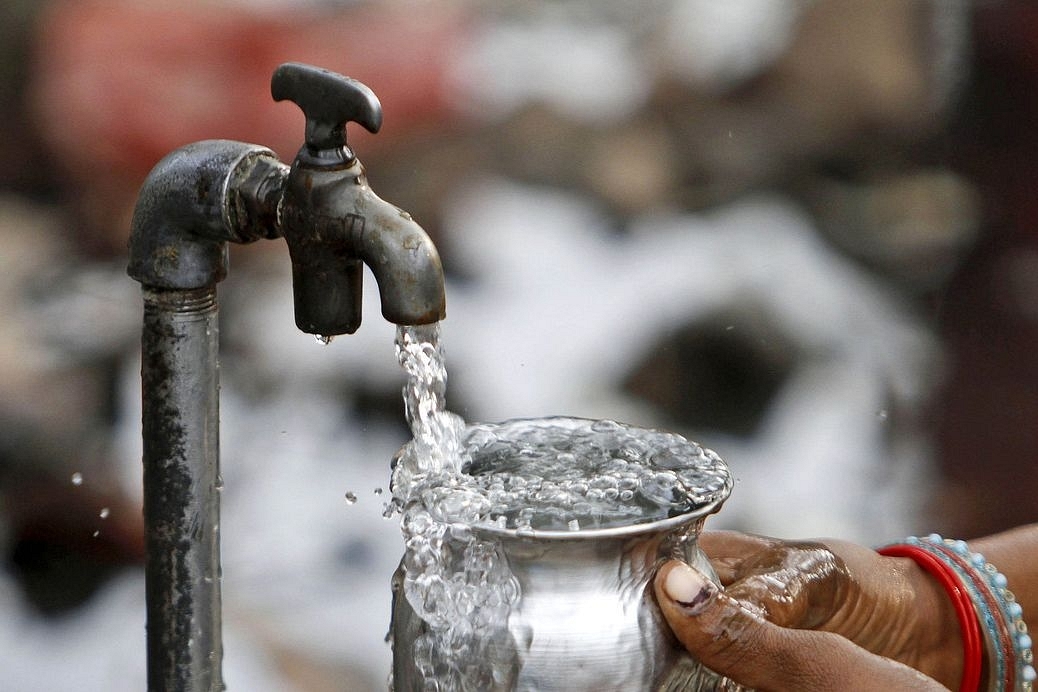News Brief
Two Manipur Villages On India-Myanmar Border Get Access To Regular Supply Of Tap Water, Thanks To Jal Jeevan Mission
- Thanks to the Jal Jeevan Mission of the central government, two border villages in Manipur get access to water supply.

Tap water reaches two far-flung villages in the North East.
Situated near the India-Myanmar border, two far-flung villages in the North East region are now getting regular water supply under Jal Jeevan Mission.
Once totally insurgent-infested, Khangbarol and Khengjoy in Manipur, are now being equipped with tap water systems, a significant development in the remote corner of the country.
Khangbarol in Khengjoy subdivision is situated 69 kilometres away from the headquarters of the aspirational district Chandel in Manipur. The village is at a distance of about 30 km from the India-Myanmar border. There are 82 households in the village, the water supply system of which has been designed keeping in mind the projected population of about 1,000 until 2041.
With an estimated cost of Rs 60 lakh, this gravity-based water supply system has ensured tap water connection to all 82 households with a present population of about 450. There is a perennial source of water from ‘Khangbarollok’ located at a distance of 6 km from the treatment site. As the source is located at a higher elevation than the treatment site, a gravity-based water supply scheme was taken up.
Khengjoy, another village in the district, is situated 60 km away from district headquarters. The village is about 20 km from the India-Myanmar border. The newly-inaugurated water supply system caters to the water needs of 73 families by providing tap water connection.
Manipur Chief Minister N Biren Singh has inaugurated two water supply projects for two villages under Jal Jeevan Mission.
Now, the operation and maintenance of the scheme is with the Village Water and Sanitation Committee as envisaged under the Jal Jeevan Mission to ensure regular and long-term supply of potable water in rural areas.
Accessibility remained the biggest challenge in implementation of the water supply schemes in the hilly areas as the region is inaccessible during the monsoon season. Transportation of material is only possible during a particular time.
Also, all materials were transported either from Imphal or Pallel town. Communication is the next biggest challenge as the area has poor network coverage, so in most cases dedicated manpower is mobilised in the area adding constraint to the already limited manpower.
In spite of Covid-19 pandemic, the officials of the Public Health Engineering Department had worked hard to ensure tap water reached every rural home in these far-flung villages.
A mid-term review of implementation of Jal Jeevan Mission in Manipur was held recently, wherein the state officials presented the progress to the National Jal Jeevan Mission team.
In order to assess the progress of implementation of the mission in states/Union Territories, a mid-year review is underway through video conferencing, wherein all states and UTs are presenting the status of tap water connection to rural homes as well as the institutional mechanisms in place for universal coverage.
Manipur has around 4.5 lakh households, but only 30,379 households have tap water connections.
During 2020-21, the state aims to provide 2 lakh functional household tap water connection. During the current year, the state is planning for 100 per cent coverage of one district and 15 blocks and 1,275 villages. State has planned for 100 per cent provision of household tap connections by 2023 under the Jal Jeevan Mission.
In 2020-21, an amount of Rs 131.80 crore was allocated to Manipur, out of which Rs 32.95 crore was released to the state. The state is eligible for additional allocation based on physical and financial performance.
Since Manipur has been allocated Rs 177 crore under 15th Finance Commission grants and 50 per cent of it is to be used for water supply and sanitation, the state has to plan for utilising this fund for rural water supply, grey-water management and most importantly for ensuring long-term operation and maintenance of water supply schemes.
Support Swarajya's 50 Ground Reports Project & Sponsor A Story
Every general election Swarajya does a 50 ground reports project.
Aimed only at serious readers and those who appreciate the nuances of political undercurrents, the project provides a sense of India's electoral landscape. As you know, these reports are produced after considerable investment of travel, time and effort on the ground.
This time too we've kicked off the project in style and have covered over 30 constituencies already. If you're someone who appreciates such work and have enjoyed our coverage please consider sponsoring a ground report for just Rs 2999 to Rs 19,999 - it goes a long way in helping us produce more quality reportage.
You can also back this project by becoming a subscriber for as little as Rs 999 - so do click on this links and choose a plan that suits you and back us.
Click below to contribute.
Latest